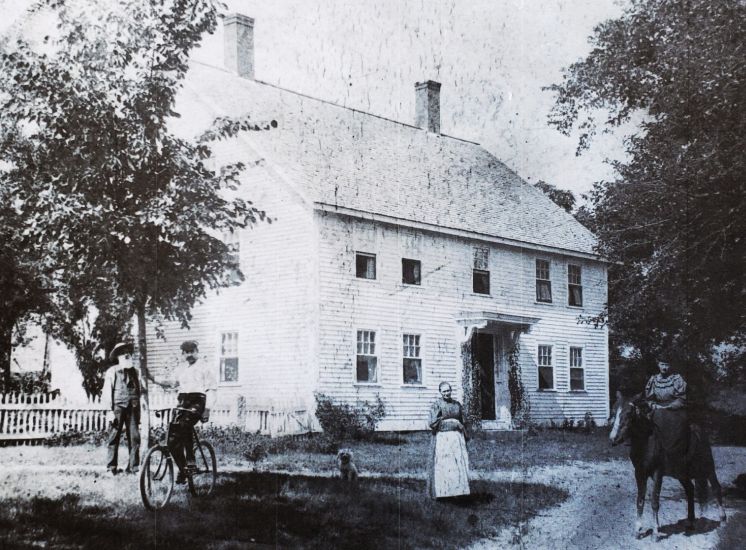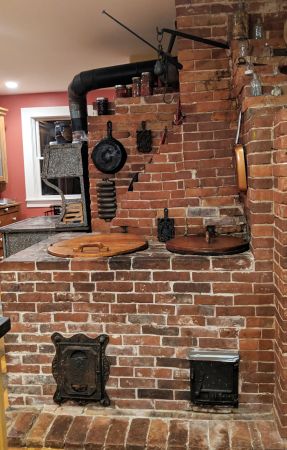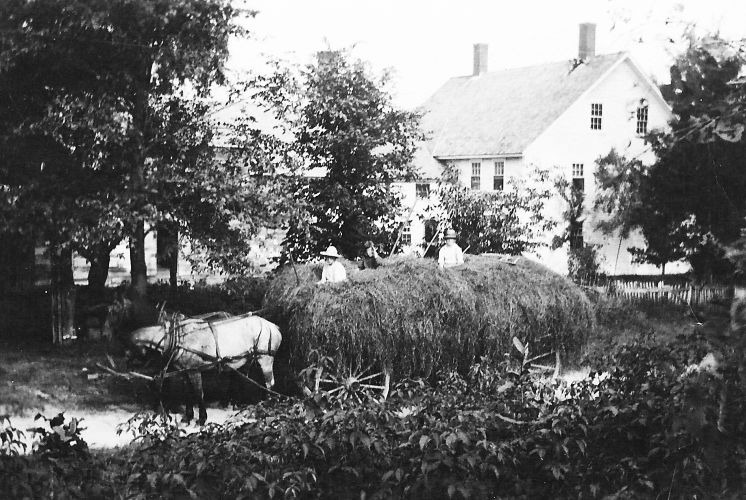New Boston Historical Society
New Boston, New Hampshire

The Todd Homestead is the last remaining property in New Boston continuously owned by the same family.
Behind the Door: 336 Francestown Road
by Mary Atai (October 2023)
One of Samuel's sons, James P. Todd, grew up here, but joined the gold rush to California in 1849. He had some success, and upon returning in 1854, he married Abigail Desire Loring. They began to build up his old family home by adding the long ell to the back of the original 1790s saltbox style house and the 1829 addition. The house then contained twelve plus rooms. It is believed the roof line was raised at this time. The new ell contains a "massive brick cooking appliance." This 8 by 8 1/2 feet brick structure is set upon a stone foundation below the level of the kitchen and dining room. The dining room side of this structure contains a brick fireplace with two cranes and a 3 feet deep Dutch oven with a soapstone lintel and door and frame. The soapstone was mined in Francestown.

James also built the impressive 2-story barn, which still stands strong after being repaired in 1969. Some of the earlier tools remain stored there.

Two of James and Abigail's children were well-known doctors. Another of their twelve children, Perley Todd, wanted to be a minister and began studying at Harvard. His eyesight was so poor, however, that he had to return to the homestead. He became the town tax collector and bought this property from a family member in 1904. He ran a successful blacksmith shop, and later willed the homestead to his son, Laban Todd. Laban was the father of Bob Todd.
Bob had studied forestry at the University of New Hampshire. He became a surveyor and forest conservationist and surveyed most of New Boston over a forty-year period. He was one of the originators of the New Boston Forestry Committee. A Town Forest is named for him on Old Coach Road. He later built a two-story facility for his offices at Todd's Corner on the site of his Grandfather Perley's blacksmith shop. His work always reflected his love for the land.
When Bob was able to buy the property in 1966, the house needed a lot of work. There was no plumbing, an outhouse for a bathroom, and it was heated only by the burning of wood. Many improvements have been made since then with indoor plumbing, oil heating, redone windows, a remodeled kitchen, the making of a master bedroom over the ell, and more.
Each room has 5 generations of stories to tell. Since Bob's passing in 2021, his widow, Laura, resides here, and continues the story.
(With thanks to Laura Todd, the writings of Robert Todd, Sr., and the writings of Carolyn Todd)
Click here to return to the main page for "Behind the Door" articles.
